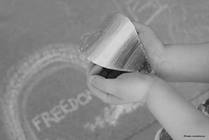Search Results
Viewing: 501-510 of 613 | All

Condition
Intracranial Hypertension (Pseudotumor Cerebri)
Idiopathic intracranial hypertension, sometimes called pseudotumor cerebri, is a condition in which the cerebro-spinal fluid is not able to drain normally.
Article
Rehab Outcomes
Our approach to inpatient rehabilitation focuses on the path ahead. Read about our demonstrated differences and outcomes.
Article
Gary Smith Team
Gary A. Smith, MD, DrPH Principal Investigator Dr. Gary A. Smith is a professor of Pediatrics, Emergency Medicine and Epidemiology at The Ohio State University.
Article
Psychosocial Services
When a child is born with a cleft lip and/or palate or any craniofacial condition, the emotional health and well-being of the child and family are just as important as the child’s medical care.
Article
Moscato Lab
The Moscato Lab, led by Emily Moscato, PhD, focuses on designing, testing and implementing equitable behavioral interventions to improve quality of life and neurodevelopmental trajectories for young children with chronic conditions impacting the central nervous system.
Article
Tips for New Runners: How Much is Too Much?
There are recommendations for level and intensity of training for kids in all sports but the number one rule is to emphasize fun, safety and fitness when it comes to kids.
News
New Guidelines for Nausea, Stomach Pain and Other Problems Help Physicians Better Diagnose, Treat Kids
A child feels nauseated all the time, but no medical test can find what is wrong. Or a child vomits regularly, but there’s no illness or eating disorder to explain it. These, and other stomach and bowel-related problems with no obvious causes, are called functional gastrointestinal disorders.

Blog
Pronouns 101: What Are They and Why Do They Matter?
Using a person’s correct pronouns is important because it affirms that person’s identity, helps them feel comfortable in their own body, and shows that you respect them for who they are.

Blog
Baby’s Head Shape: Should You Be Concerned?
Bringing a baby home from the hospital can be a scary time for a parent as they navigate the first few months as an expanded family. The list of things to worry about as a child develops can seem endless, and baby’s head shape is a common item on that list.

Condition
Disruptive Behavior Disorders (DBD)
Children with disruptive behavior disorders (DBD) show ongoing patterns of uncooperative and defiant, rule-breaking behavior.
